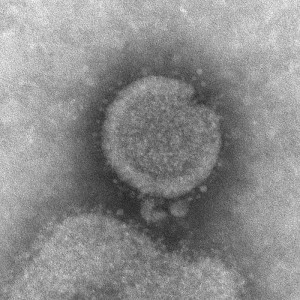H7N9 Influenza Source Confirmed
A new study has demonstrated the deadly H7N9 strain of the influenza virus is passed through contact with poultry, specifically chickens and quail. The H7N9 strain has already been confirmed in over 375 influenza cases, killing over a hundred people, currently all in China. Of individuals who contract the illness, 22% die.

Under a high magnification, this negatively-stained transmission electron micrograph (TEM) captured some of the ultrastructural details exhibited by the new influenza A (H7N9) virus.
Image/CDC
Researchers from the Exotic and Emerging Avian Disease Research Unit at the USDA in Athens, GA began their study by examining the genes from the H7N9 virus and comparing them across species. The gene for “H7” produces the seventh variety of the hemagglutinin protein, responsible for length and severity of the disease, and the “N9” gene produces the ninth variety of the neuraminidase protein, which is responsible for viral spread through the body and attachment to target cells. The variations of the H and N proteins determine transmission rates and severity of any given influenza A virus.
After confirming the similarity of H7N9 genes from patient isolates to those of various species of poultry, the researchers injected seven poultry species with the human isolates of the virus. Quails and chickens quickly spread the virus to other cage-mates, while peking ducks became infected but did not spread the virus. Pigeons were completely resistant to the virus.
Notably, no poultry species became sick during the experiments, showing that asymptomatic spread had led, and is still leading to, poultry-to-human transmissions in farms where workers believe their animals are uninfected. “The silent carriage also creates a conflict between poultry producers, who want to preserve their flocks, versus the public health goals of eradicating the virus,” says leader of the research lab David Suarez. The Chinese government closed down many poultry farms during the initial outbreaks in spring of last year, although many called for widespread destruction of all poultry farms to ensure the prevention of viral spread.
Suarez is hopeful though, despite the recent resurgence of the virus. “We felt a major knowledge gap in the outbreak was that we didn’t know which poultry species was maintaining the virus and exposing people. With this information, better decisions can be made to control and hopefully eradicate the virus.”
Edward Marks is a PhD student at the University of Delaware. His research involves the healing of burns and other chronic wounds using nanomedicine techniques, with the goal of pushing any advancement directly into the clinic. Edward received his BS from Rutgers University and Masters from the University of Delaware.















[…] […]
[…] […]